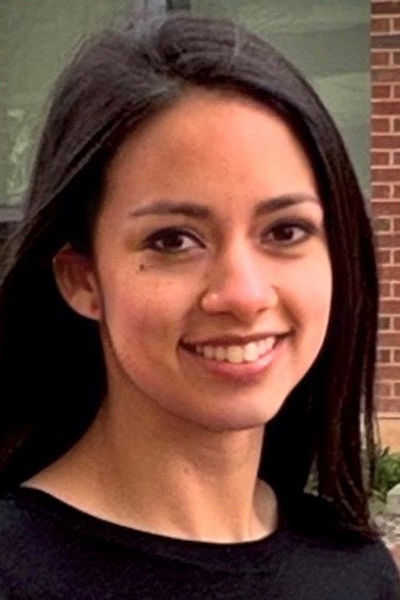

An SABCS Special Session on Tuesday, Dec. 8, featured a diverse panel of speakers and abstract presentations looking at the influence of socio-economic factors on access to care, personalized medicine for underserved populations, and how policy changes have affected disparities among breast cancer patients. A Patient Voice Panel Discussion followed abstract presentations in each topic area.
SABCS registered attendees will have exclusive access to an on-demand replay of this session, “Setting the Stage for Health Equity, Collaboration and Partnership,” presented by Tigerlily Foundation and AACR, until March 13, 2021.
Tigerlily Founder and CEO Maimah Karmo and Charles M. Perou, PhD, May Goldman Shaw Distinguished Professor of Molecular Oncology at the University of North Carolina, served as co-moderators for the session.
“I am a 14-year survivor of breast cancer and a first-generation immigrant, and I want to thank SABCS and AACR for committing to anti-racism and making history today by opening this event with a conversation on health disparities, on equity and ways to end disparities, in partnership with a Black-led, patient-led, woman-led, immigrant-led organization,” Karmo said.
The first part of the session featured three abstract presentations on disparities in health care access:
- SS1-01: Neha Goel, MD, assistant professor, University of Miami, explained the impact of economic, racial/ethnic, and racialized economic residential segregation on breast cancer survival.
- SS1-02: Emily B. Ambinder, MD, MS, assistant professor of biology and radiological science, Johns Hopkins Medicine, discussed how, despite the uptake of digital breast tomosynthesis (DBT) for breast cancer screening, racial disparities persist.
- SS1-03: Jolie Jean, a fourth-year medical student at Tufts University, examined racial disparity in partial mastectomy and oncoplastic surgery.


The second part of the session featured abstract presentations focused on the necessity of eschewing a one-size-fits-all approach to medicine to overcome health care disparities.
Minoru Miyashita, MD, PhD, University of Chicago, discussed how comprehensive genomic and transcriptomic profiling of molecular subtypes reveal ancestral differences in the activity of signaling pathways between patients with African and European ancestry.
“Women of African ancestry with breast cancer experience disproportionately high mortality rates compared to women of European ancestry,” he said. “Comprehensive understanding of the contribution of genetic ancestry is crucial to improving treatments outcomes for African ancestry women.”
Alina M. Hamilton, MS, graduate research assistant, Department of Pathology and Laboratory Medicine, University of North Carolina at Chapel Hill, addressed racial differences in breast cancer immune microenvironments. By leveraging data from the Carolina Breast Cancer Study, researchers identified three global phenotypes of the immune response that vary by age, race, tumor grade, and subtype.


“We’ve also identified widespread differences in immune cell-specific expression in basal-like breast cancer and additional differences by race, which may be targetable to reduce racial disparities in breast cancer,” Hamilton said.
Fangyuan Zhao, Department of Public Health Sciences, University of Chicago, talked about racial disparities in pathological complete response among breast cancer patients receiving neoadjuvant chemotherapy. Her team found that Black patients have lower odds of achieving pCR after new adjuvant chemotherapy, with the largest racial disparity among HR-negative and HER2-positive patients.
“Delayed initiation of treatment and failure to complete the full regimen of chemotherapy contributed to the racial disparity in the single-institution cohort,” she explained. “Adjusting for tumor subtype, clinical stages, and delay in treatment did not fully explain the racial disparity.”
Rachel Martini, Department of Surgery, Weill Cornell Medical College, and Department of Genetics, University of Georgia, shared gene expression profiles of Ghanaian and Ethiopian triple-negative breast tumors.

Women with shared West African ancestry have disproportionately higher breast cancer mortality in a more frequently diagnosed with triple-negative breast cancer, she explained.
“After quantifying genetic ancestry from our RNAseq alignments, we were able to identify an African ancestry-specific gene signature that delineated Ghanaian and Ethiopian individuals and additionally showed differences in immune cell trafficking in abundance between these two groups,” Martini said.
Policy change to address health care disparities defined the third part of the session.
Anu G. Gaba, MD, Clinical Professor, University of North Dakota, and medical oncologist at Roger Maris Cancer Center, presented a study on whether Medicaid expansion under the Affordable Care Act narrowed the gap between American Indian and white patients on breast cancer management and prognosis.
With Medicaid expansion, the proportion of uninsured declined significantly, and early breast cancer diagnosis increased in American Indians, she said. While there was an across-the-board decrease in the proportion of patients who received first definitive treatment within 30 days of diagnosis following the expansion, the drop was significantly less in American Indians and in states that expanded Medicaid. The three-year mortality rate was unaffected.

Johnie Rose, MD, PhD, Assistant Professor, Director of the Preventive Medicine Residency Program, and member of the Cancer Prevention Control & Population Research Program at Case Comprehensive Cancer Center, Case Western Reserve University, presented evidence that Medicaid expansion in Ohio seems to have improved some income-based disparities in care processes and outcomes. The researchers found no significant effect of expansion on time to treatment for low-income women.
“Both before and after Medicaid expansion, low-income women in Ohio waited about six days longer for treatment,” Dr. Rose said. “There was, however, a significant narrowing of the gap between low-income women and controls in stage at diagnosis.”
Prior to expansion 38.1% of low-income women had regional disease compared to local. After expansion, that rate was 30.9%.
Following Medicaid expansion, the proportion of low-income women receiving reconstructive surgery increased from 12.1% to 16.7%. Both groups of women saw significantly increased rates of breast conserving surgery after expansion.

Mariana Chavez-MacGregor, MD, MSC, Department of Health Services Research, Division of Cancer and Population Science, University of Texas MD Anderson Cancer Center, presented evidence highlighting the positive impact of policies aimed at improving access to health care, specifically addressing racial disparities in time to adjuvant chemotherapy administration among breast cancer patients. “Our study demonstrates that Medicaid expansion is associated with a decrease in the proportion of patients experiencing delays in adjuvant chemotherapy initiation,” she said.
Additional abstract presentations in the concluding portion of the session:
- PS7-56: Julie S. Wecsler, MD, assistant professor of surgery, Rush University, addressed how the Affordable Care Act affected breast cancer stage at presentation at an urban safety net hospital.
- SS1-11: Timothy J. Robinson, MD, PhD, assistant member in the Department of Radiation Oncology, Moffitt Cancer Center, discussed a comprehensive analysis of health services, exploring sociodemographic, clinical, and genomic factors driving locally advanced breast cancer mortality via a first-in-kind linkage of SEER-Medicare data with physical tumor samples.



